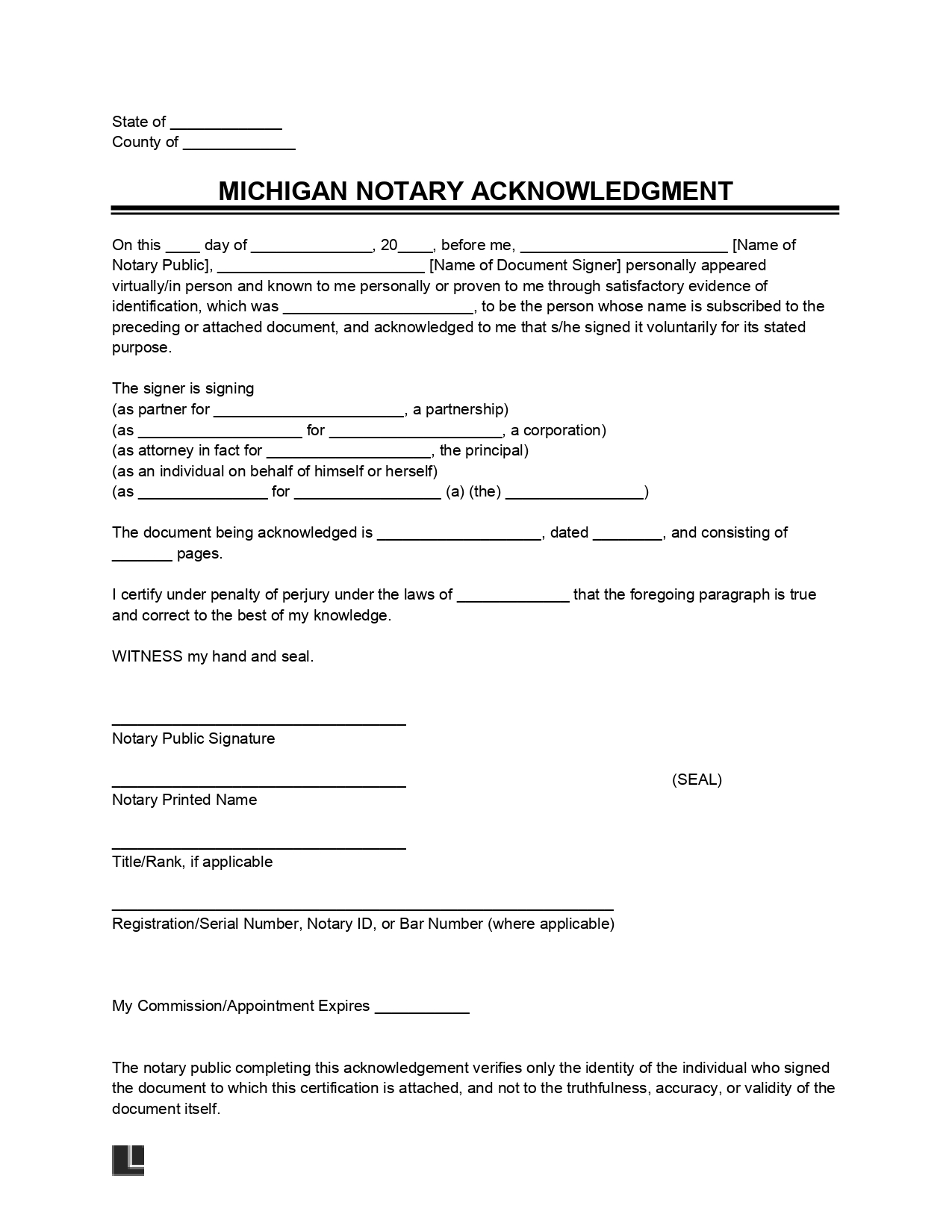A Minnesota notary acknowledgment form is used to validate the signing of legal documents.
To get a document notarized, you must bring it and the notary acknowledgment form to a notary public. The notary public identifies the individual, witnesses the signing, and fills out the form with essential details. This certificate serves as proof of the signer’s authenticity and validity of their signature.
Legal Considerations
Statute: § 358.66
Form of Acknowledgment: A notarial act may be performed using a short form, a form permitted by state law or jurisdiction, or a form that sets forth the notarial officer’s actions. (§ 358.65)
Notary Term of Commission: Five years. (§ 359.02)
Notary Handbook: The Notary Commission Guide provides detailed information about the notary application process, the duties and responsibilities of a notary, and the rules and regulations governing notarial acts in the state.
Is Online Notarization Legal in Minnesota?
Yes, online notarization is legal. The state passed Senate File 893, effective January 1, 2019, allowing online notarial acts using remote communication technology.
To perform remote online notarizations, a notary public must register with the secretary of state and use communication technology that conforms to § 358.64. The notary must also conduct credential analysis, identity proofing, and remote presentation to ensure the validity of the remote online notarization.
The notary must keep an electronic journal and complete the remote online notarial certificate with the online notary public’s electronic signature, electronic seal, title, commission number, and commission expiration date, among other required information.
How to Notarize
Step 1 – Find a Notary Public
You can search online for a notary public or check with your bank, local government office, or a shipping store like UPS or FedEx.
Step 2 – Schedule an Appointment
Once you have found a notary, schedule an appointment to meet with them.
Step 3 – Prepare Your Document
Make sure your document is complete and ready to be notarized. Do not sign it yet.
Step 4 – Bring Photo ID
When you meet with the notary, bring your photo ID, such as a driver’s license or passport. They can also verify your identity if you have a credible witness to swear it or through personal knowledge.
Step 5 – Sign the Document
Sign the document before the notary public, but do not fill in any other information.
Step 6 – Complete the Notarial Certificate
The notary public will complete the notarial certificate on the document, including the date, your name, signature, and any other required information.
Step 7 – Apply the Notary Seal
The notary public will apply their notary seal or stamp on the document.
How to Verify a Notary
- Navigate to the website of the Secretary of the State’s Find a Notary page.
- Enter a name or commission number, and filter by city or county optionally.
- After a search, a list of your search results will appear beneath the search field. You can view the name, commission number, business, city, county, and status of each notary that fits your search criteria.
- You can click on the notary to view details such as public address and commission expiration.
How to Write (for Notary)
- Download a Minnesota notary acknowledgment form in PDF or Word.
- Enter the name of the county you are in, the date, and the name of the person whose signature you are witnessing.
- Next, provide your signature, printed name, title, commission expiration date, and associated county. Below that, provide your stamp or seal where indicated.
- Sign your name and affix your official notary seal or stamp.


